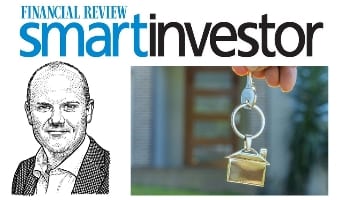In the right circumstances, there are good reasons to exit your SMSF and the vast majority of existing SMSFs will be closed at some stage.
Note: This article by Tim Mackay was originally published in the Australian Financial Review. You can view it on the AFR website [here] ($paywall).
For every 12 Australians who join a self-managed superannuation fund (SMSF) each year, five leave. Since 2013, 120,000 Australians have quit their SMSF and have done so at an increasing rate. To put that in perspective, 120,000 people is a city the size of Darwin.
In a recent article I discussed why you should consider setting up your own SMSF. However, despite the impressive growth in SMSFs in recent years, it clearly hasn’t been a one-way street.
In the right circumstances, there are good reasons to exit your SMSF and the vast majority of existing SMSFs will be closed at some stage (some will pass to the next generation).
If you established your SMSF to buy a property which you sell, then reassess your SMSF. iStock
If your SMSF balance gets smaller, you should be canny with your precious retirement funds. Size matters for SMSFs. The smaller your fund, the less benefit you receive. As the Productivity Commission found, SMSFs with less than $1 million struggle to match the returns of APRA-regulated funds. So review whether your SMSF is still appropriate.
One third of all SMSF members (170,000 people) are 65 or over and they don’t view their age as the key consideration for keeping or closing their SMSF. Young at heart, they remain involved with family, community and philanthropy and are actively engaged with their finances.
The most important issue isn’t age but your physical and mental health. If you notice any deterioration in either, don’t rush to any decisions. Instead, plan how you will pass control of your wealth to those you care about – especially if you are the driving member of the SMSF.
Eventually age does become an issue for SMSF members and 85 seems a tipping point. Those over 84 represent 2 per cent of the general population, whereas they represent only 1 per cent of SMSF members (12,000 people).
According to the National Centre for Social and Economic Modelling, three in 10 people over 85 have dementia, the single greatest cause of disability for older Australians. An SMSF member with dementia has a legal disability and cannot fulfil their trustee or director role. They can appoint someone in their place, roll their funds to an APRA-regulated fund or withdraw it from super.
When to reassess
If you established your SMSF to buy a property which you sell, then reassess your SMSF. Likewise if you retire or sell your business, you may seek a care-free retirement without the worry of trustee responsibilities. Having built wealth, maybe you just want to enjoy it.
By rolling your funds to an APRA-regulated fund and closing your SMSF, you can simplify your financial life with fewer financial decisions.
In my experience, far more people retain their SMSF in retirement as they know it still is the best way for them to manage their wealth.
However, a change in your relationship, such as a death or separation, can be another catalyst for re-assessing your SMSF.
The death of a partner is further complicated when it’s the person who manages the family’s finances, including the SMSF. The remaining partner faces a bewildering array of decisions – should I keep the SMSF, how do I manage it, who do I trust?
Develop an orderly and structured exit plan from your SMSF. It’s unfair to leave it to those left behind to pick up the pieces.
Sadly, one in three marriages end in divorce and a relationship breakdown inevitably leads to at least one of you leaving the SMSF. After your home, often your SMSF is the largest asset you need for financial security. You also need to decide who gets to keep the SMSF structure.
Obtain trusted advice before agreeing to give up your SMSF. Once you agree who keeps the SMSF, move forward and create the dream retirement lifestyle that you deserve.
Your SMSF is not a status symbol and closing it should not be perceived as an admission of financial failure. About 25,000 Australians do so every year and, in certain circumstances, closing it can be the smart financial decision.
Tim Mackay is an independent advisor at Quantum Financial. You can view his personal website at www.theindependentfinancialadvisor.com.au
You can view the original Australian Financial Review article by Tim Mackay ‘When to close your SMSF’ in PDF format below.
Other Australian Financial Review articles by Tim Mackay that you may find interesting:
- Industry funds’ DIY options could help you keep franking credits
- When to close your SMSF
- Who to include in your self-managed super fund
- How to keep your SMSF alive
- Top 100 SMSFs control $8 billion
- Why inviting your kids into SMSF is a bad idea
- SMSF tips: Should you really set up a self-managed superannuation fund?
- Complexity helps justify fees
- Banking royal commission: what SMSF investors need to know
- Why SMSF advisers need to lift their game
- An SMSF action plan for 2019 to keep your fund running smoothly








Leave A Comment